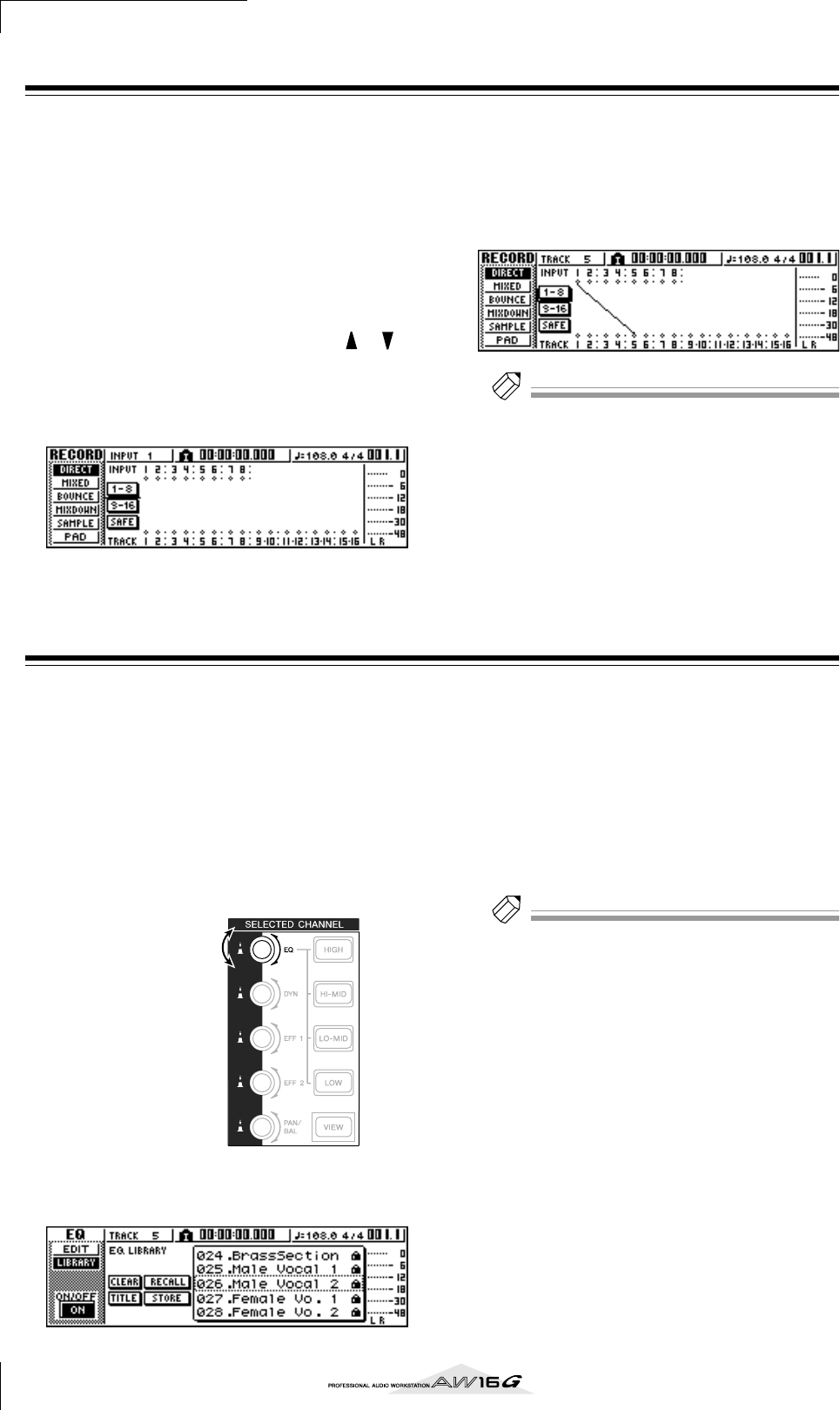
Overdubbing
56
Assigning the input signal to a track
In order to overdub, you must first assign the mic or
instrument to a new track. The basic procedure is the
same as when recording the first track.
1
Lower the [STEREO] fader to the –∞ position.
2
Connect your instrument or mic to a MIC/
LINE INPUT jack.
3
In the Work Navigate Section, repeatedly
press the [RECORD] key or hold down the
[RECORD] key and use the CURSOR [ ]/[ ]
keys to access the DIRECT page of the
RECORD screen.
The [INPUT SEL] key and [TRACK SEL] key will
blink red.
4
Assign the input channel to which your
instrument/mic is connected to a new track,
and adjust the level.
For details on this step, refer to “Track recording” (→
p. 39). The diagram below shows an example of
when input channel 1 is assigned to track 5.
Tip!
Tip!
In this example we will use “direct recording,” in which
one input channel is assigned to one track. However, you
may also use “bus recording,” in which multiple input
channels are sent to the L/R bus and recorded on one or
two tracks.
Instantly recalling an EQ library
The chapter entitled “Track recording” explained how to
access the LIBRARY page of the EQ screen and load an
EQ library to change the EQ. This section explains how
you can instantly recall an EQ library.
1
Press the [INPUT SEL] key of the input chan-
nel for which you want to use a library.
The corresponding input channel will be selected
for operations.
2
In the Selected Channel section, press down
the [EQ] knob and turn it.
When you turn the [EQ] knob to left or right while
pressing it, the LIBRARY page of the EQ screen will
appear.
3
Turn the [DATA/JOG] dial to select an EQ
library. Then move the cursor to the RECALL
button and press the [ENTER] key.
The selected library will be loaded.
4
If you want to adjust the EQ settings, use the
[HIGH] key, [HI-MID] key, [LO-MID] key, and
[LOW] key of the Selected Channel section to
select the EQ band, and turn the [EQ] knob
to adjust the amount of boost or cut.
Tip!
Tip!
If necessary, you can make detailed adjustments to EQ
parameters such as the center frequency and Q (
→
p. 92).
Turn while pressing


















